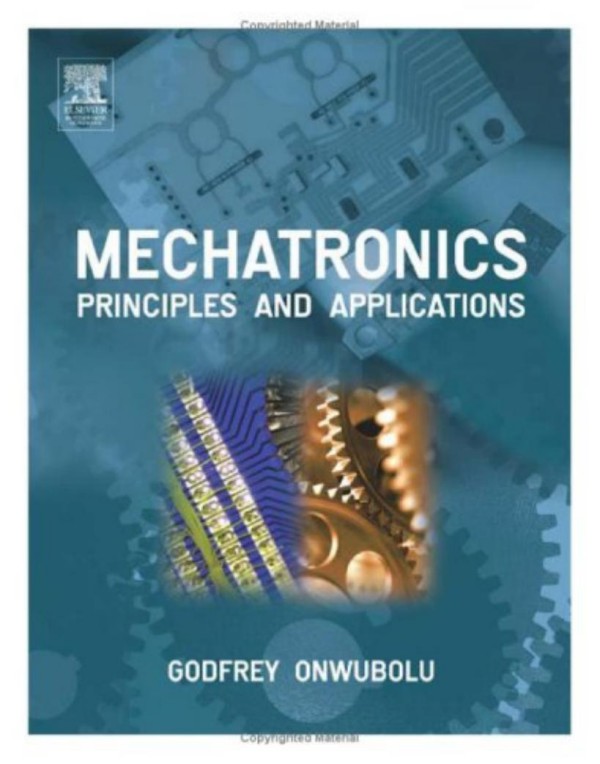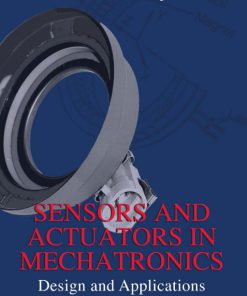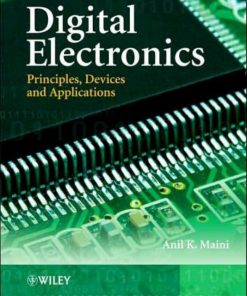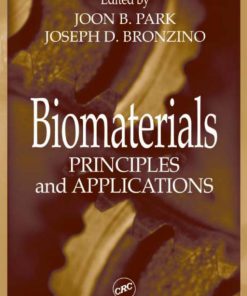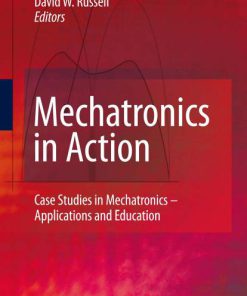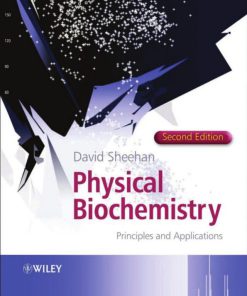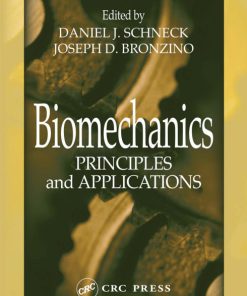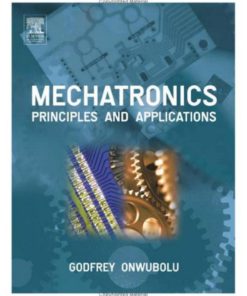Mechatronics Principles and Applications 1st Edition by Godfrey Onwubolu 0750663790 9780750663793
$50.00 Original price was: $50.00.$25.00Current price is: $25.00.
Authors:Godfrey C. Onwubolu , Series:Mechatronics Engineering [124] , Author sort:Onwubolu, Godfrey C. , Languages:Languages:eng , Published:Published:Feb 2008 , Publisher:Elsevier
Mechatronics Principles and Applications 1st Edition by Godfrey Onwubolu – Ebook PDF Instant Download/Delivery. 0750663790, 9780750663793
Full download Mechatronics Principles and Applications 1st Edition after payment
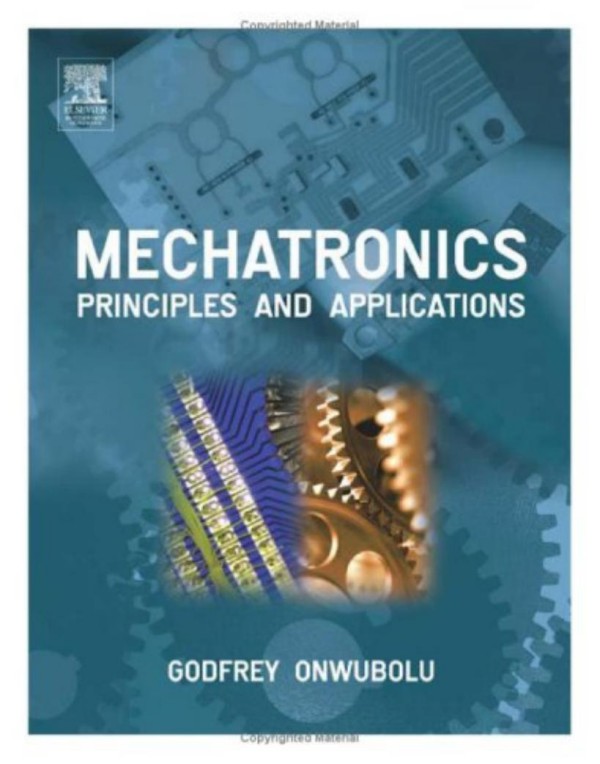
Product details:
ISBN 10: 0750663790
ISBN 13: 9780750663793
Author: Godfrey Onwubol
Mechatronics is a core subject for engineers, combining elements of mechanical and electronic engineering into the development of computer-controlled mechanical devices such as DVD players or anti-lock braking systems. This book is the most comprehensive text available for both mechanical and electrical engineering students and will enable them to engage fully with all stages of mechatronic system design. It offers broader and more integrated coverage than other books in the field with practical examples, case studies and exercises throughout and an Instructor’s Manual. A further key feature of the book is its integrated coverage of programming the PIC microcontroller, and the use of MATLAB and Simulink programming and modelling, along with code files for downloading from the accompanying website.
* Integrated coverage of PIC microcontroller programming, MATLAB and Simulink modelling
* Fully developed student exercises, detailed practical examples
* Accompanying website with Instructor’s Manual, downloadable code and image bank
Mechatronics Principles and Applications 1st Table of contents:
Chapter 1: Introduction to mechatronics
1.1 Historical perspective
1.2 Key elements of a mechatronic system
1.3 Some examples of mechatronic systems
Further reading
Problems
Chapter 2: Electrical components and circuits
2.1 Introduction
2.2 Electrical components
2.3 Resistive circuits
2.4 Sinusoidal sources and complex impedance
Problems
Further reading
Chapter 3: Semiconductor electronic devices
3.1 Introduction
3.2 Covalent bonds and doping materials
3.3 The p–n junction and the diode effect
3.4 The Zener diode
3.5 Power supplies
3.6 Active components
Problems
Further reading
Chapter 4: Digital electronics
4.1 Introduction
4.2 Number systems
4.3 Combinational logic design using truth tables
4.4 Karnaugh maps and logic design
4.5 Combinational logic modules
4.6 Timing diagrams
4.7 Sequential logic components
4.8 Sequential logic design
4.9 Applications of flip-flops
Problems
Further reading
Chapter 5: Analog electronics
5.1 Introduction
5.2 Amplifiers
5.3 The ideal operational amplifier model
5.4 The inverting amplifier
5.5 The non-inverting amplifier
5.6 The unity-gain buffer
5.7 The summing amplifier
5.8 The difference amplifier
5.9 The instrumentation amplifier
5.10 The integrator amplifier
5.11 The differentiator amplifier
5.12 The comparator
5.13 The sample and hold amplifier
5.14 Active filters
Problems
Further reading
Chapter 6: Microcomputers and microcontrollers
6.1 Introduction
6.2 Microcontrollers
6.3 The PIC16F84 microcontroller
6.4 Programming a PIC using assembly language
6.5 Programming a PIC using C
6.6 Interfacing common PIC peripherals: the PIC millennium board
6.7 The PIC16F877 microcontroller
6.8 Interfacing to the PIC
6.9 Communicating with the PIC during programming
Problems
Further reading
Chapter 7: Data acquisition
7.1 Introduction
7.2 Sampling and aliasing
7.3 Quantization theory
7.4 Digital-to-analog conversion hardware
7.5 Analog-to-digital conversion hardware
Problems
Further reading
Chapter 8: Sensors
8.1 Introduction
8.2 Distance sensors
8.3 Movement sensors
8.4 Proximity sensors
8.5 Electrical strain and stress measurement
8.6 Force measurement
8.7 Time of flight sensors
8.8 Binary force sensors
8.9 Temperature measurement
8.10 Pressure measurement
Problems
Further reading
Internet resources
Chapter 9: Electrical actuator systems
9.1 Introduction
9.2 Moving-iron transducers
9.3 Solenoids
9.4 Relays
9.5 Electric motors
9.6 Direct current motors
9.7 Dynamic model and control of d.c. motors
9.8 The servo motor
9.9 The stepper motor
9.10 Motor selection
Problems
Further reading
Internet resources
Chapter 10: Mechanical actuator systems
10.1 Hydraulic and pneumatic systems
10.2 Mechanical elements
10.3 Kinematic chains
10.4 Cam mechanisms
10.5 Gears
10.6 Ratchet mechanisms
10.7 Flexible mechanical elements
10.8 Friction clutches
10.9 Design of clutches
10.10 Brakes
Problems
Further reading
Chapter 11: Interfacing microcontrollers with actuators
11.1 Introduction
11.2 Interfacing with general-purpose three-state transistors
11.3 Interfacing relays
11.4 Interfacing solenoids
11.5 Interfacing stepper motors
11.6 Interfacing permanent magnet motors
11.7 Interfacing sensors
11.8 Interfacing with a DAC
11.9 Interfacing power supplies
11.10 Interfacing with RS 232 and RS 485
11.11 Compatibility at an interface
Problems
Further reading
Chapter 12: Control theory: modeling
12.1 Introduction
12.2 Modeling in the frequency domain
12.3 Modeling in the time domain
12.4 Converting a transfer function to state space
12.5 Converting a state-space representation to a transfer function
12.6 Block diagrams
Problems
Further reading
Internet resources
Chapter 13: Control theory: analysis
13.1 Introduction
13.2 System response
13.3 Dynamic characteristics of a control system
13.4 Zero-order systems
13.5 First-order systems
13.6 Second-order systems
13.7 General second-order transfer function
13.8 Systems modeling and interdisciplinary analogies
13.9 Stability
13.10 The Routh-Hurwitz stability criterion
13.11 Steady-state errors
Problems
Further reading
Internet resources
Chapter 14: Control theory: graphical techniques
14.1 Introduction
14.2 Root locus
14.3 Frequency response techniques
Further reading
Internet resources
Chapter 15: Robotic systems
15.1 Types of robot
15.2 Robotic arm terminology
15.3 Robotic arm configuration
15.4 Robot applications
15.5 Basic robotic systems
15.6 Robotic manipulator kinematics
15.7 Robotic arm positioning concepts
15.8 Robotic arm path planning
15.9 Actuators
Problems
Further reading
Chapter 16: Integrated circuit and printed circuit board manufacture
16.1 Integrated circuit fabrication
16.2 Printed circuit boards
Further reading
Chapter 17: Reliability
17.1 The meaning of reliability
17.2 The life curve
17.3 Repairable and non-repairable systems
17.4 Failure or hazard rate models
17.5 Reliability systems
17.6 Response surface modeling
Problems
Further reading
Internet resources
Chapter 18: Case studies
18.1 Introduction
18.2 Case study 1: A PC-based computer numerically controlled (CNC) drilling machine
18.3 Case study 2: A robotic arm
Problems
Further reading
Internet resources
Appendix 1: The engineering design process
A1.1 Establishment of need and goal recognition
A1.2 Specification
A1.3 System conception
A1.4 Detailed design
A1.5 Prototyping
A1.6 Testing
A1.7 Review and documentation
Appendix 2: Mechanical actuator systems design and analysis
A2.1 Introduction
A2.2 Helical springs
A2.3 Spur gears
A2.4 Rolling contact bearings
A2.5 Fatigue failure
A2.6 Shafts
A2.7 Power screws
A2.8 Flexible mechanical elements
Problems
Further reading
Appendix 3: CircuitMaker 2000 tutorial
A3.1 Drawing and editing tools
A3.2 Simulation modes
People also search for Mechatronics Principles and Applications 1st:
principles of mechatronics
understanding mechatronics
is mechatronics worth it
is mechatronics a good degree
You may also like…
eBook PDF
Mechatronics Principles and Applications 1st Edition by Godfrey Onwubolu 0750663790 9780750663793

